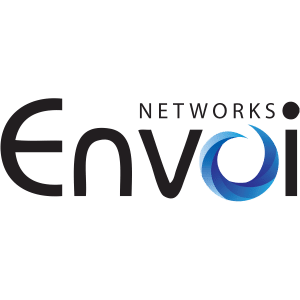Call Center
Solutions For Your Call Center Needs
Call centers are incredibly unique businesses that require dedicated communications solutions. Generally speaking, call centers are housed in offices that are purpose-built to handle a large volume of phone calls. Call centers typically handle customer service, support, telemarketing, telesales and collections functions. Call centers range from very small informal operations to massive, highly optimized sites with hundreds or even thousands of agents. No matter the size or scope of your call center operation, Envoi is here to provide the ideal communications solution.
Call Center 101
Call centers use specialized telephone equipment to maximize productivity. Specialized telephony switching systems called “Automatic Call Distribution” or ACDs are used to queue and route inbound calls to agents based on a wide variety of criteria. Outbound calls are frequently generated by an automated system called a “Predictive Dialer” that monitors the status of agents and place calls on their behalf. Other common call center tools include desktop integration (frequently referred to as “screen pop”), Interactive Voice Response (IVR) applications, call recording solutions, productivity monitoring utilities, workforce planning systems and various methods of historical and near real-time reporting.
Automatic Call Distribution (ACD)
An ACD is a specialized phone system that routes (distributes) incoming calls to teams of agents assigned to various call queues. Queues are simply ordered list of calls to be dispatched to agents. The ACD oversees the process of placing incoming calls into the proper queue, assigning priority to those calls based on various factors (the order of their arrival, the importance of the caller, the urgency of the caller’s situation), and ultimately dispatching those calls to an available agent. The algorithm by which calls are dispatched is called the queue strategy.
Queue Strategies
A simple ACD system consists of a source of calls (a pool of lines, trunks or virtual trunks), a FIFO (first-in, first-out) queue and a pool of agents who are selected using a “ring-all” strategy. In this case, when a call arrives the system rings the phones of all agents who are not already on a call. The first agent to answer the call is connected with the calling party. All the other phones stop ringing.
A more complex (and likely more useful) configuration would have the call offered to the agent who had been in the idle state longest. This “most idle” strategy is frequently used when all agents are considered equally qualified to handle a task. Other common strategies include round robin, linear hunt, least-recently-called, fewest calls and random. In some cases, the ACD can weight its selection based on the caller’s need (generally collected using an IVR application) and a list of skills associated with each agent. This is generally referred to as “skills-based routing”.
Caller experience
While waiting in queue, callers generally hear a combination of marketing messages, queue status messages and music. Marketing messages are simply audio recordings that are piped into the queue on a periodic basis. Status messages provide the caller with specific information about their status — the number of callers ahead of them in the queue, the estimated wait time and sometimes alternatives to waiting in queue. Some more advanced call queueing systems support virtual queueing. A virtual queueing system allows callers to provide a callback number, then disconnect. Their position in the queue is preserved and when an agent becomes available the system places an outbound call to the call
Dialers
Outbound call centers frequently use a dialer application to connect agents with targets. Dialers can be simple desktop applications that implement a basic “click-to-call” function or much more advanced systems
Automated Attendant
Automated attendant systems have long been paired with ACDs, allowing callers to route themselves into the appropriate call queue. Automated attendants are simply menu systems that prompt callers to indicate their preference using the keys on their phone or, in some cases, by speaking keywords. Callers are generally willing to accept up to two levels of menu before reaching a live agent. More than two levels tend to annoy most callers and can result in an increase in abandoned calls.
Interactive Voice Response (IVR)
Interactive Voice Response or IVR applications are another technology frequently integrated with ACDs. IVR systems prompt callers for data items — things like account numbers, prescription refill codes or package tracking numbers — and use those values to look up caller-specific information from remote data sources. In some cases, the IVR application can handle an entire transaction without human intervention. In other cases, the IVR feeds data to the ACD to help it route the call appropriately.
Screen pop
To increase agent productivity, desktop business applications are frequently integrated with the ACD in such a way that data related to the caller is automatically displayed when a call is delivered. This is commonly referred to as either “Computer-Telephony Integration” or simply as a “screen pop”. There are several ways to accomplish this. In some cases, the business applications support a CTI standard like TAPI or TSAPI. In other cases, the applications are custom and communicate directly with the ACD or a “CTI server” that acts as a proxy for the ACD.
Call Recording
Call centers frequently record calls either to monitor the performance of their agents or for regulatory compliance. Call recording systems handle the process of capturing the audio from all participants in the call, mixing it, storing it and producing an index that allows administrators or regulators to locate and review recordings. A properly built recording system makes it easy to pinpoint conversations using common keys including Caller ID, date, time and agent ID.
So what are you waiting for? Please complete the form on this page or contact our sales department directly so we can get started making your call center more efficient and profitable: 888-978-9464
Get a Free Quote
Envoi Networks is pleased to offer no-cost, no-obligation quotes for business class phone service and systems, along with an array of other communications services. Please provide your contact information below, and one of our experts will contact you to get your quote done right away.



